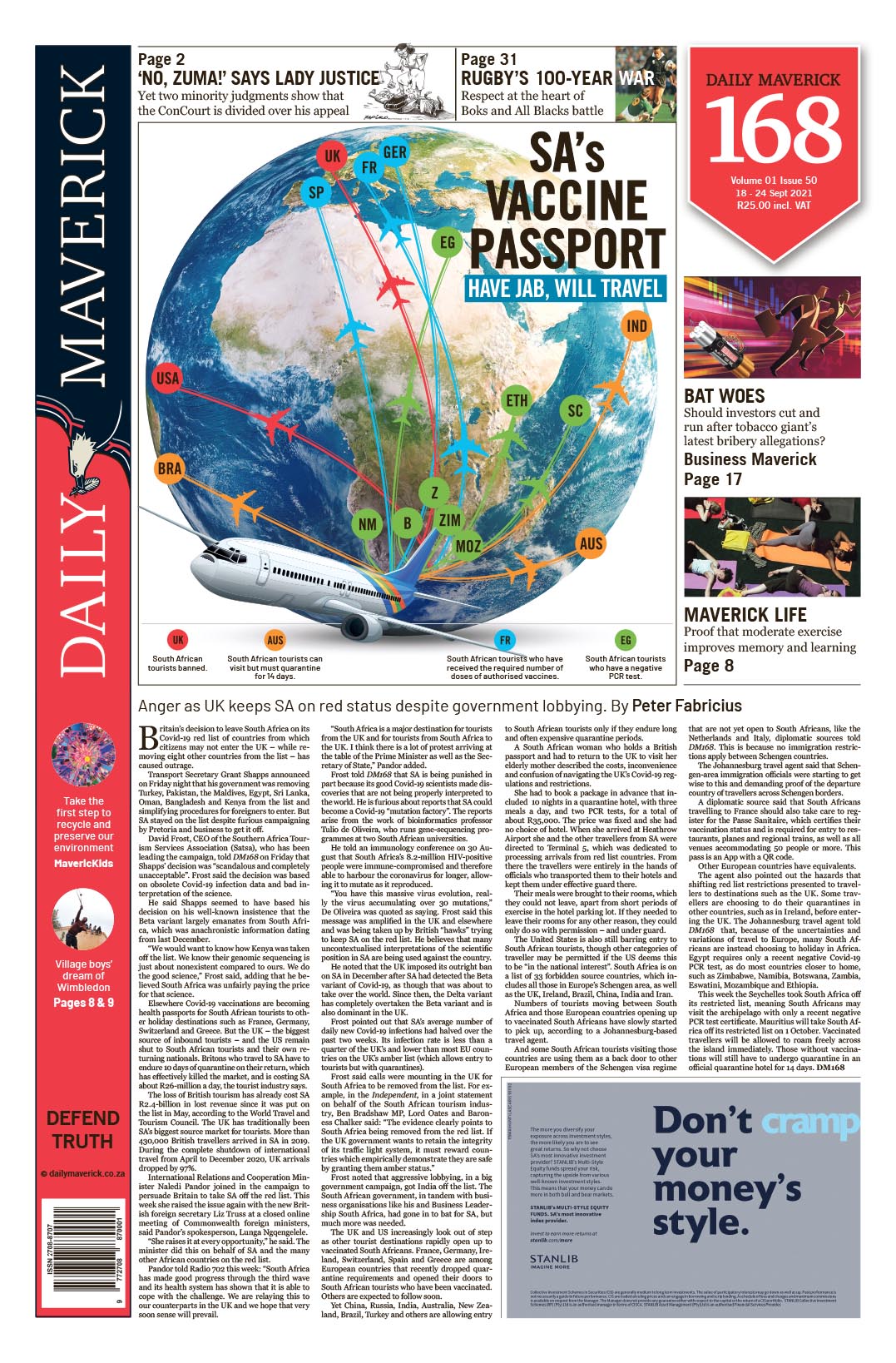First published in the Daily Maverick 168 weekly newspaper.
And yet, these issues around supply chains are not confined to perfidious Albion. Those in the EU who are looking at the developing situation with a generous dose of Schadenfreude should be careful what they wish for. South Africans too are certainly not immune to these potential pitfalls.
These problems, which are more pronounced in the UK than elsewhere, are the result of almost unprecedented disruptions to supply chains, which in particular are essential to any globally integrated economy. The effects of lockdown and subsequent rapid reopening of the economy have shown up in macroeconomic data and corporate signals around the world. Producer price inflation is soaring globally.
Substantial and unprecedented gaps between factory output and orders are unmistakable and distinct. Transportation costs between China and the US are roughly 10 times what they were pre-pandemic. It is hard to find a sector that is not experiencing major supply constraints.
There is no simple answer to the question of what is actually happening. Peering into the ever murky world of price levels, it would appear that these are global macroeconomic phenomena of disrupted supply chains, high transportation costs, container scarcity and congested ports. Labour shortages, particularly in the UK, are compounding the issue in key nodes of the economy like truck drivers and manufacturing, forcing companies to operate far below capacity. The Confederation of British Industry has warned that these disruptions may last up to two years.
What remains unclear is whether these are indeed long-term structural issues that will bedevil supply chains or if they are simply transitory. Some economists in the latter camp have likened these issues to a blocked bottle of tomato sauce. Shake and shake, and nothing comes out, then out it floods and one’s food is drowning in the stuff. Could these supply chain blockages be resolved in a few weeks, only for the pent-up supply to gush out, depressing ensuing prices?
Acolytes of this school of thought point to the recent collapse in US lumber prices. After soaring to all-time highs, prices have plummeted 48% in the past two months. Recent inflation data from the US suggests that prices are indeed starting to plateau, and may start coming down in the next few months.
In addition, the effects of the Delta variant in the US in particular suggest that there is more downside risk to the economy.
However, all these taken together – economic weakening alongside cost-push inflation – suggest that the global economy is likely to experience a period of stagflation not seen since the 1970s. It remains to be seen how long this dynamic can play out – unlike then, there is no secular pressure from oil cartels on energy prices. However, given the extreme levels of interconnectedness of the global economy supply chain, disruptions are more likely to persist. This is a scenario that more and more companies are putting front and centre of their medium-term horizon plans.
The critical question is therefore how the Federal Reserve will react to these conflicting dynamics. Stagflation, as shown by the experience of the Fed in the 1970s and subsequently when Paul Volcker finally tamed the inflationary dynamics in the 1980s with Friedmanesque monetary tightening, is quite simply the most perilous economic climate that can confront central bankers. Tighten to depress prices and you risk choking off any economic recovery, or keep rates easy and risk runaway price rises. This dilemma will become increasingly disquieting as the US enters autumn, and Black Friday and Christmas loom. With monthly asset purchases still running at the clip of $80-billion a month, the question will be how quickly this can be tapered without interest rates spiralling and the debt-servicing costs to a corporate and consumer America – which are still carrying close to record levels of gearing – soaring.
Naturally, this does not just matter for economists or captains of industry. With asset valuations also at record highs, and still underpinned by ultra-low rates and profligate monetary policy, this has major implications for all those with exposure to equity and bond markets. The rand, too, will not escape any ensuing taper tantrums. Should interest rates in the US rise, expect capital to flood back in search of a risk-free yield, fleeing from bond markets such as South Africa.
The challenge for the Fed is therefore how to slowly end these extraordinary measures and rerate to some semblance of normalcy, while keeping the Goldilocks economy ticking over and ensuring price levels and economic growth do not get too hot or too cold.
Either way, it would appear that the dominant theme of the post-financial crisis era – aggregate demand deficits – has in a post-pandemic era given way to frustrating supply-side rigidities. Investors would do well to position themselves for this new normal. DM168
This story first appeared in our weekly Daily Maverick 168 newspaper which is available for R25 at Pick n Pay, Exclusive Books and airport bookstores. For your nearest stockist, please click here.















 Become an Insider
Become an Insider
Comments - Please login in order to comment.